Crossman Fountain Pen c. 1904-1909
by Jim Mamoulides, October 30, 2005, updated March 27, 2023
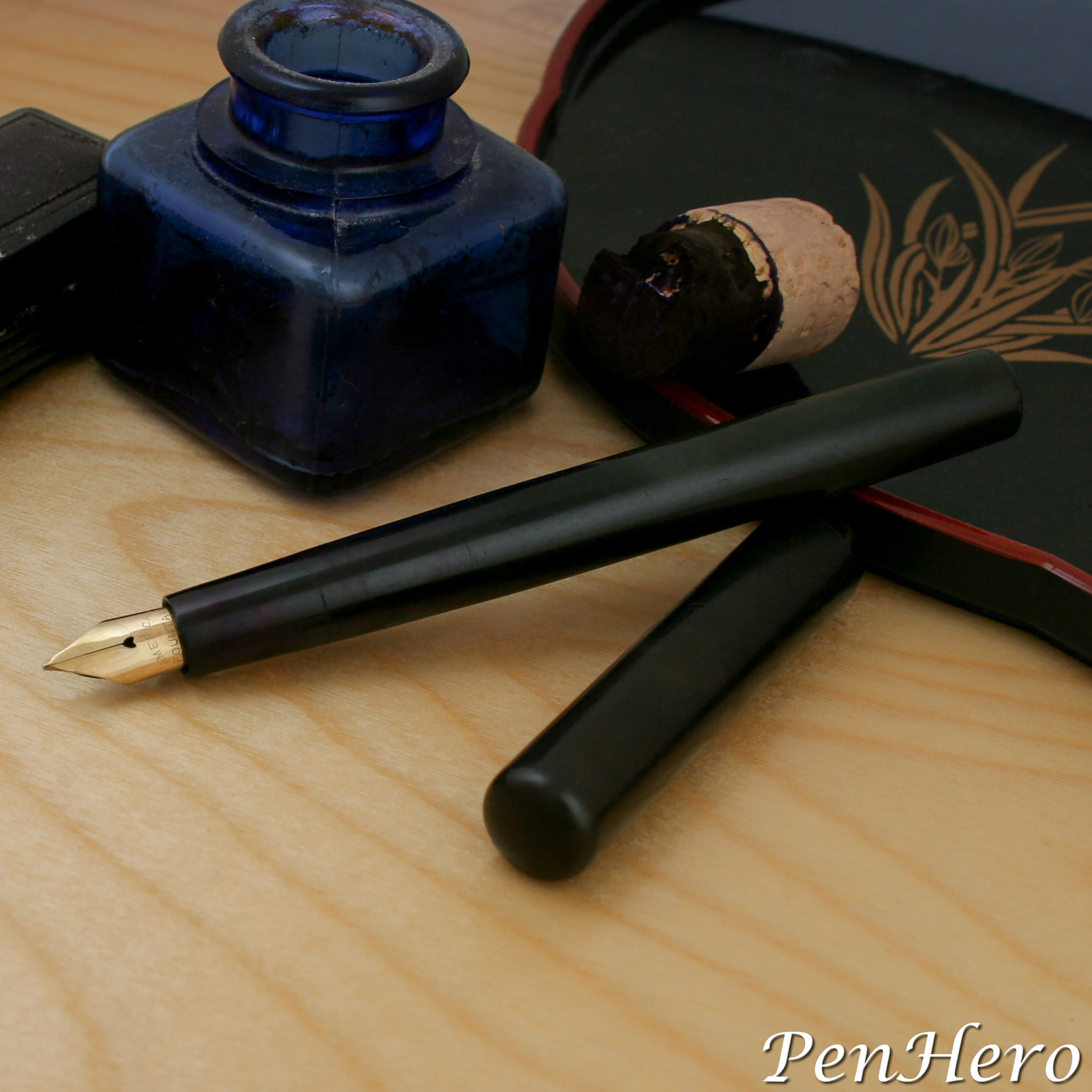 Crossman Fountain Pen c. 1904-1909
Crossman Fountain Pen c. 1904-1909
What's In a Name?
My wife and I enjoy pen hunting together, and in the early 2000s it meant we're tramping all over Maine in the summertime. She is much better at spotting the good stuff than I am and is a better negotiator. Probably the Mainer in her. We've learned where the antique stores are and generally which ones are likely candidates for good finds. We've had incredible success in Maine, both in terms of quantity of good quality pens and pencils and in numbers of interesting finds. It appears that Mainers might be frugal, but they valued quality and it shows in the pens they left behind.
On one summer's trip in 2005, we had been out all day and had found a lot of really nice items, and near the end of the day we were looking over a group of pens when a dull, plain hard rubber pen caught my eye. The imprint was nearly impossible to read in the poor light and the nib looked like it simply said "AMERICAN," so I wasn't really certain what we were looking at. I’ve become pretty good at identifying at least the makers of most twentieth century pens and pencils and their values helping to decide which are keepers and which to pass over, but this particular one was a puzzler. It appeared well made and in good condition, so we decided to take it along with the rest of the good pens in that shop. We made the best deal we could and went home with our treasures.
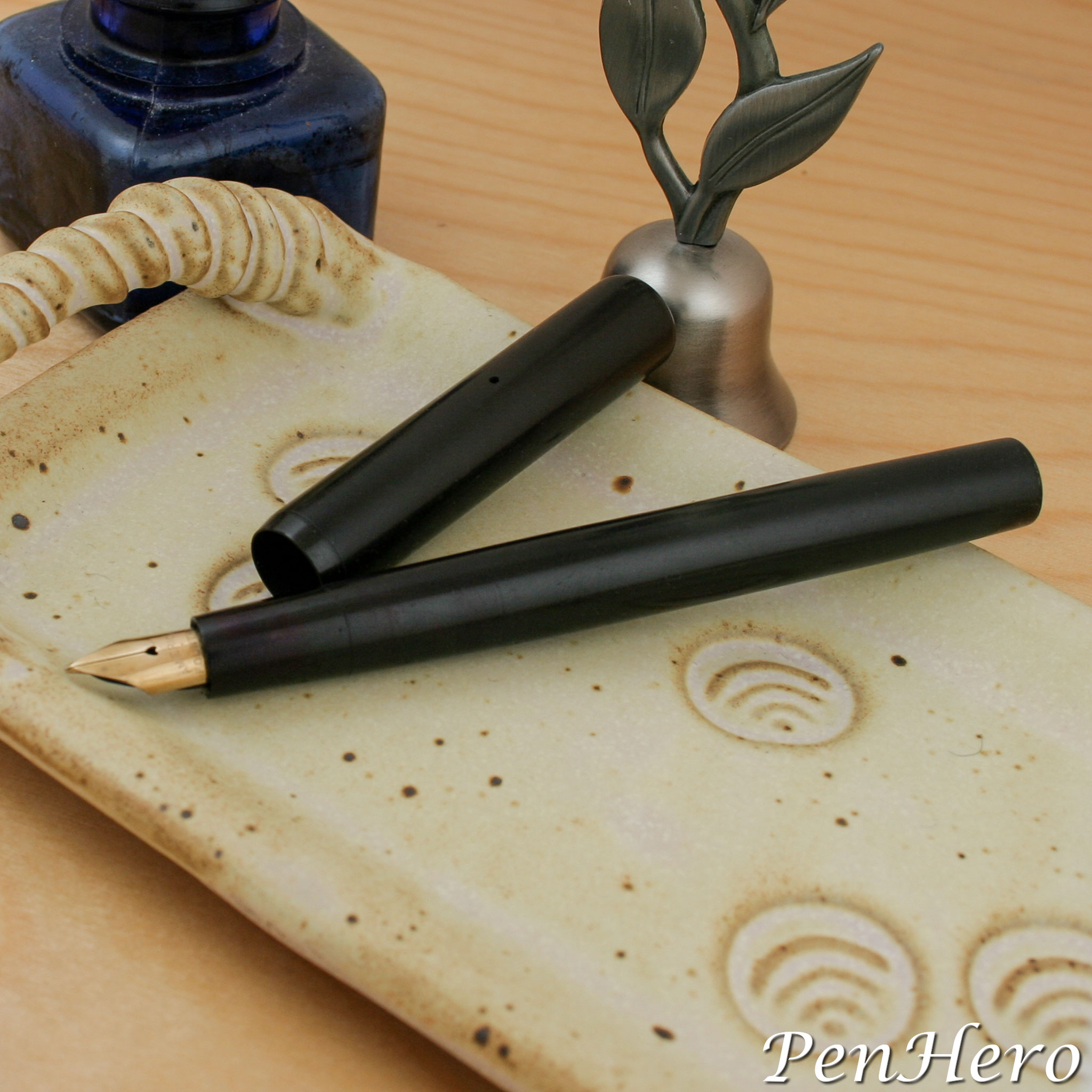 Crossman Fountain Pen c. 1904-1909
Crossman Fountain Pen c. 1904-1909
Like many pens found in the wild, this one was pretty dirty, so when we got home, I gave it a mild soap and water wash to at least get a better idea of the markings. The good news was the imprint was strong enough to read, the bad news was it didn't help me, given my limited knowledge of early hard rubber pens from smaller makers. The first question the imprint brings is, "What is a Crossman pen?" I hadn't heard of this name before and assumed, based on the imprint, it was a Boston based pen company. Returning home and rifling through the materials I had back home, I decided to put the question to the pen community. Basically, it was, "Look what I found! What is it?"
I was soon contacted by Rob Astyk, who identified the name on the pen as belonging to Martin Crossman, a Boston pen designer who held a pen design patent. He was unaware if Crossman actually made any pens with his own name on them. This pen appeared to incorporate the design feature that Crossman had patented, that defined how the feed was secured and removed in order to fill the pen. The cap and barrel are smooth, with no chasing or markings other than a ring cut in around the top edge of the tapering lip of the cap. The cap has two slits cut that would appear to be there to hold a clip. Rob noticed the two slits in the pen cap and related that Crossman also designed a pliers tool that was used to attach an early version of the Van Valkenburg clip. If so, any clip that may have been attached was missing.
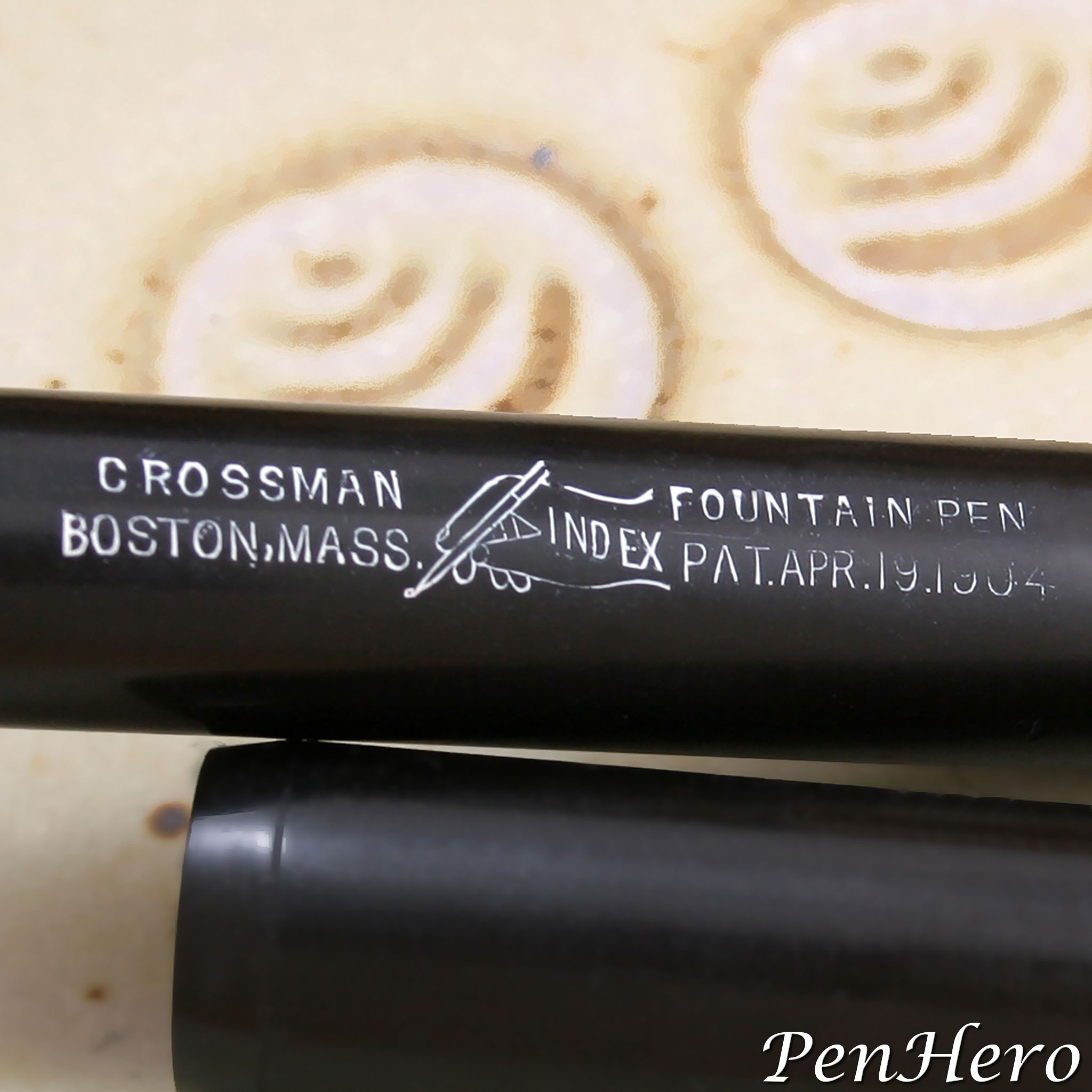 Crossman pen barrel imprint
Crossman pen barrel imprint
Since late 2005 I’ve wondered about this pen and decided to revisit the research on it and see if I could turn up more on who made it. Having recently read the Agatha Christie mystery Murder on the Orient Express, I decided, like Hercule Poirot, to make a list of the clues and see if I could solve the mystery.
There are four key things about the pen that give clues about its identity. The barrel imprint has two. Like many early hard rubber pens this one has a large and elaborate one. The left side is CROSSMAN over BOSTON, MASS. The middle has a writing hand with INDEX on it. The right side has FOUNTAIN PEN over PAT. APR. 19, 1904. The questions are, "Who is Crossman?" and "What does the patent reveal?" Next is the nib, with the visible stamping AMERICAN over FOUNTAIN. This asks, "Who is American Fountain and is that a clue to the maker?" Turning to the other side of the nib reveals the last clue. The feed looks like it has a knob on in it that sits in a curved cut out in the section. "Why is that and what does that design tell us?" The two slits in the cap will turn out to be a red herring as we don't have enough information for it to help.
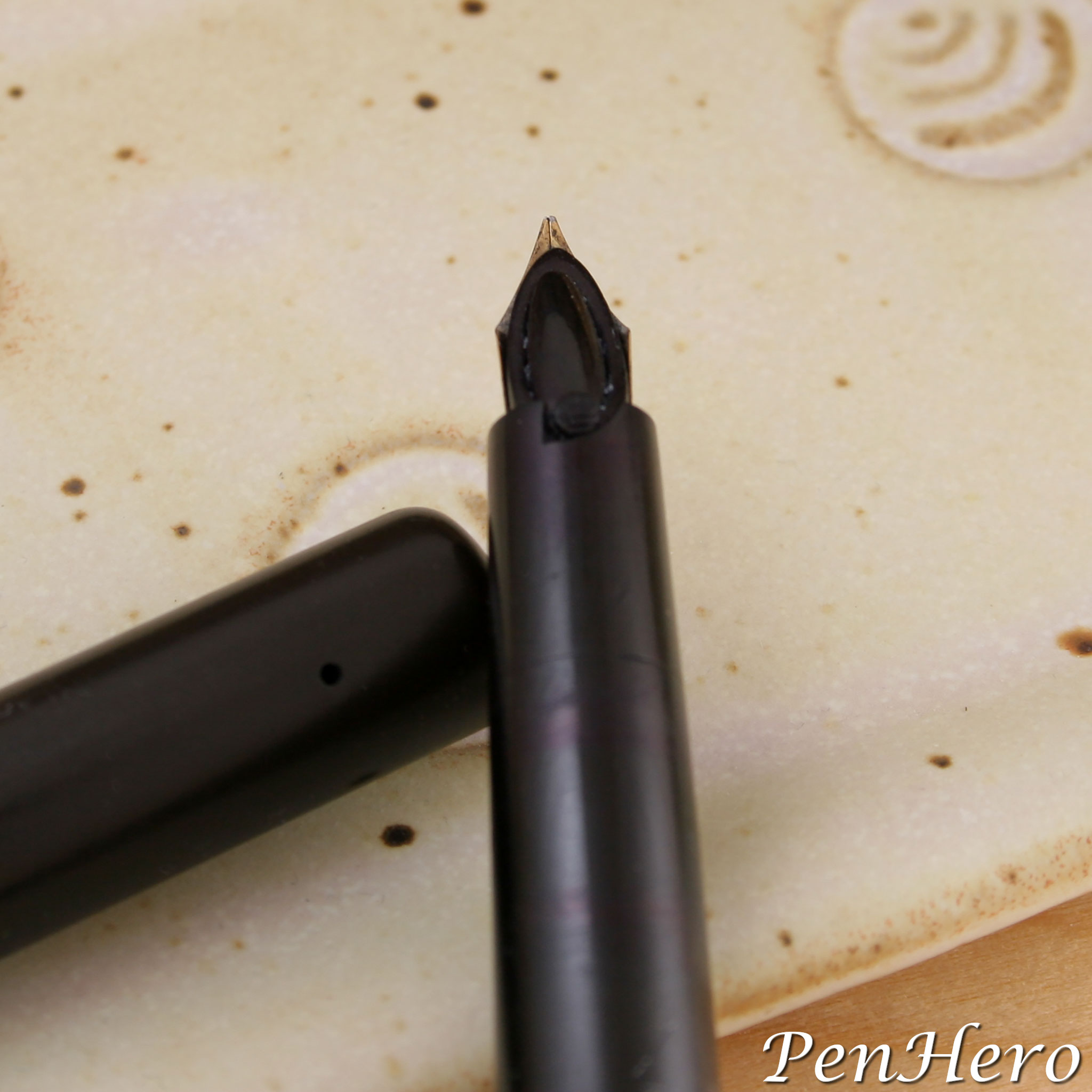 Crossman Fountain Pen detail showing section notch and feed knob c. 1904-1909
Crossman Fountain Pen detail showing section notch and feed knob c. 1904-1909
Was there a Crossman pen company that made this pen? Were they based in Boston, Massachusetts? Initial searches in Boston or Massachusetts showed no such company using that name. A wider search was needed and Portland, Maine got a hit. A short piece titled “New Corporations” in the May 19, 1905 Portland Evening Express states, “Crossman Fountain Pen Company, organized at Portland for the purpose of manufacturing and dealing in fountain pens with $60,000 capital stock” and listing officers Howard R. Ives as president and E. A. Turner as treasurer, both from Portland with the date of incorporation as May 15, 1905. No one named Crossman on the filing, but that is not necessarily a negative indication. This date is close enough to the April 19, 1904 patent date on the pen to be encouraging. A similar announcement appears in “Trade Notes” in the Geyer’s Stationer, adding Levi Turner as clerk. How long did the company last? It’s uncertain, but twice, in 1907 and 1909 the company appears on a list published in the Bangor Daily News titled “List of Corporations With Unpaid Taxes Whose Charters Will Be Forfeited Under Following Conditions” and in each case the unpaid assessment is $10. At minimum the company appears to have survived until 1909. I could not find any biographical or even address information on any of the named officers of the company other than they were listed as being in Portland, Maine. Looks like mystery number one is solved.
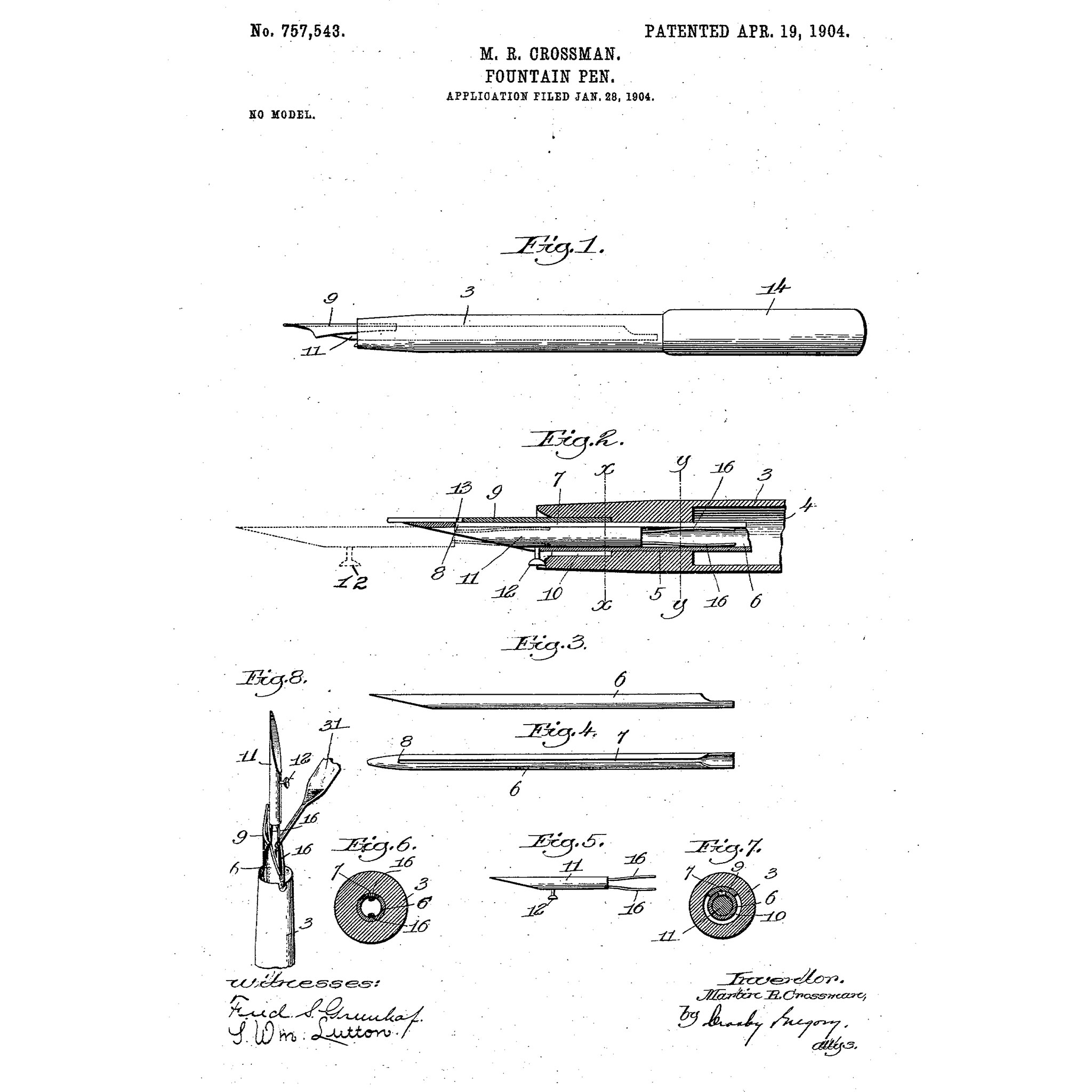 United States Patent number 757,543 awarded to M. R. Crossman on April 19, 1904
United States Patent number 757,543 awarded to M. R. Crossman on April 19, 1904
The next mystery from the barrel imprint is the patent. Doing a patent search reveals United States Patent number 757,543 applied for by Martin R. Crossman of Boston, Massachusetts on January 28, 1904 and awarded on April 19, 1904. Crossman’s invention is novel for an eyedropper filling pen. Many eyedropper pens are filled by removing the section, usually threaded, from the barrel and then using the eyedropper to drip ink into the barrel directly and once filled putting the section back on. Threaded sections were used to make the joint more ink tight. Who wants inky fingers from a leaking section joint? Crossman’s invention dispenses with opening the section altogether. Figure 2 of the patent shows the bored out barrel meeting the section and the feed has a tube inserted into the section bore. This tube then has a plug inserted that is slid out from the section by pulling on a small knob that reveals the open tube where the user can insert the tip of the eyedropper to fill the pen barrel with ink. The plug can then be slid back into the section by pushing the knob fully to the notch in the section in order to seal the tube and prevent leakage. The back end of the plug has springy fingers that hold it in place using friction when filling or inside the pen. The imprint patent mystery is solved which also explains fourth mystery about the knob on the feed and the notch in the section for the knob.
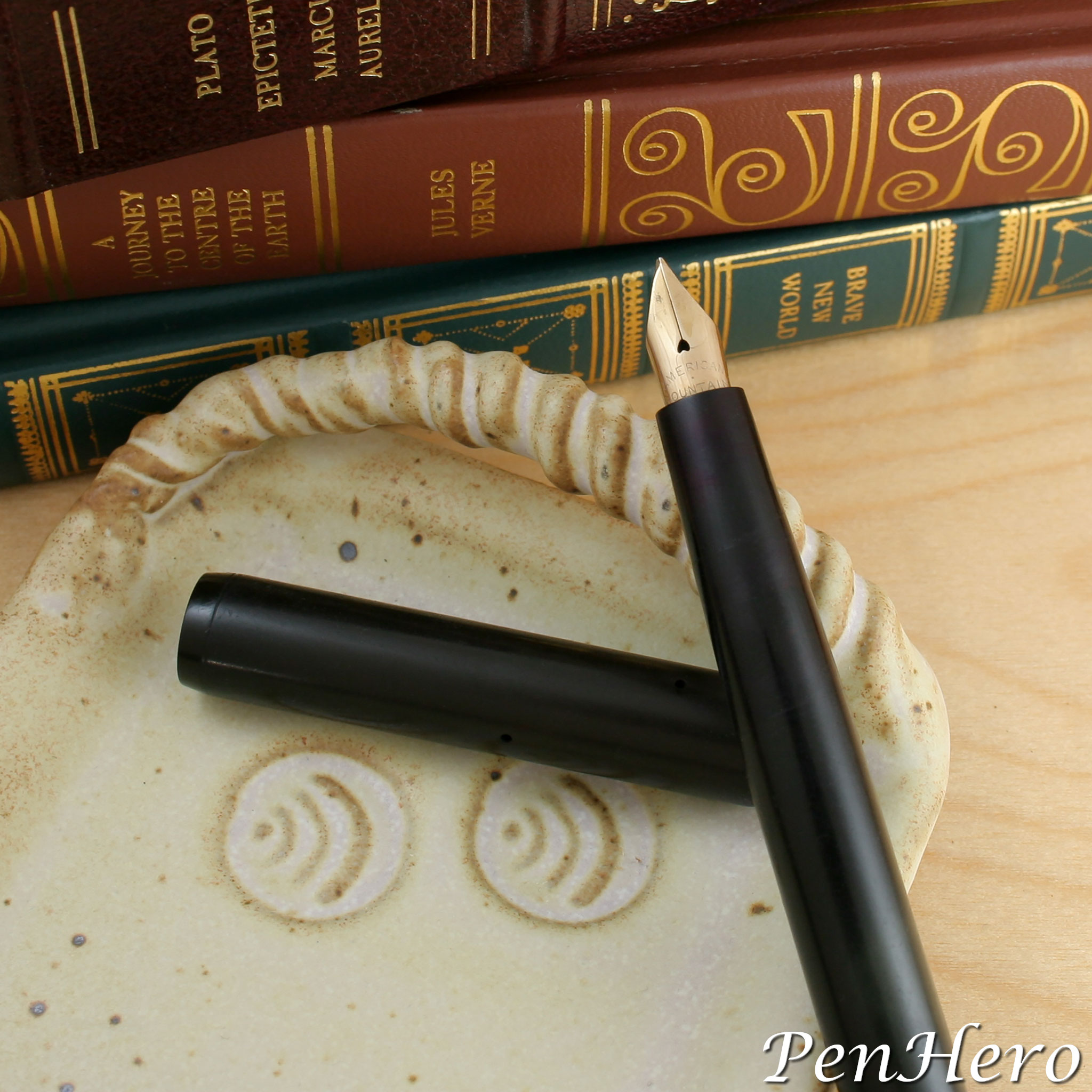 Crossman Fountain Pen c. 1904-1909
Crossman Fountain Pen c. 1904-1909
The nib stamping is the final mystery, boldly stamped AMERICAN FOUNTAIN and probably also PEN COMPANY if I was able to pull the nib out. This part was most likely made by the American Fountain Pen Company of Boston, Massachusetts, established in 1899 and later became the Moore Pen Company, a familiar name. Why this nib? I can only speculate that perhaps it was either a replacement, or the Crossman Pen Company sourced their nibs from the American Fountain Pen Company. I can say that the design would make removing the nib unit a little tricky, but pen repair people from that period would have been able to do such a nib swap. Not a definitive solution to this mystery, but it's in the neighborhood!
The best conclusion I can make from this research is the pen, found in Maine, from the very limited data above, is that it was made by the Crossman Fountain Pen Company of Portland Maine, likely between 1904 and 1909. It’s possible that Martin R. Crossman had some role with the company, perhaps in design and/or manufacturing, or it could be that part of the compensation for his patent was to have his name on the company and thus the pens, or both.
I did not do the usual indentification guide for this pen as there is such limited information. I also did not do a performance test as at the time I did not know how to fill the pen and a dip test really would not tell much. I no longer have the pen to conduct a real test drive, if it was even possible. This article is more about solving the mystery, which was very much fun to chase down!
All this and more from a slightly browning, clipless, unadorned hard rubber pen a hundred years old found in a small antique shop in the heart of Maine. There's a lot of pen history out there yet to be found. Keep hunting!
References
Annual Report of the Board of State Assessors of the State of Maine, 1905, page 241
Annual Report of the Bureau of Taxation of the State of Maine, Maine Bureau of Taxation, 1908, page 272
“List of Corporations With Unpaid Taxes Whose Charters Will Be Forfeited Under Following Conditions” The Bangor Daily News, May 18, 1907, page 12
“List of Corporations With Unpaid Taxes Whose Charters Will Be Forfeited Under Following Conditions” The Bangor Daily News, July 17, 1909, page 13
“New Corporations” Bookseller, Newsdealer and Stationer, June 1, 1905, page 506
“New Corporations” Portland Evening Express, May 19, 1905, page 14
The National Corporation Reporter, May 25, 1905, page 519
“Trade Notes” Geyer’s Stationer, June 8, 1905, page 9
United States Patent number 757,543 awarded to M. R. Crossman on April 19, 1904
Interact
Comments on this article may be sent to the author, Jim Mamoulides


